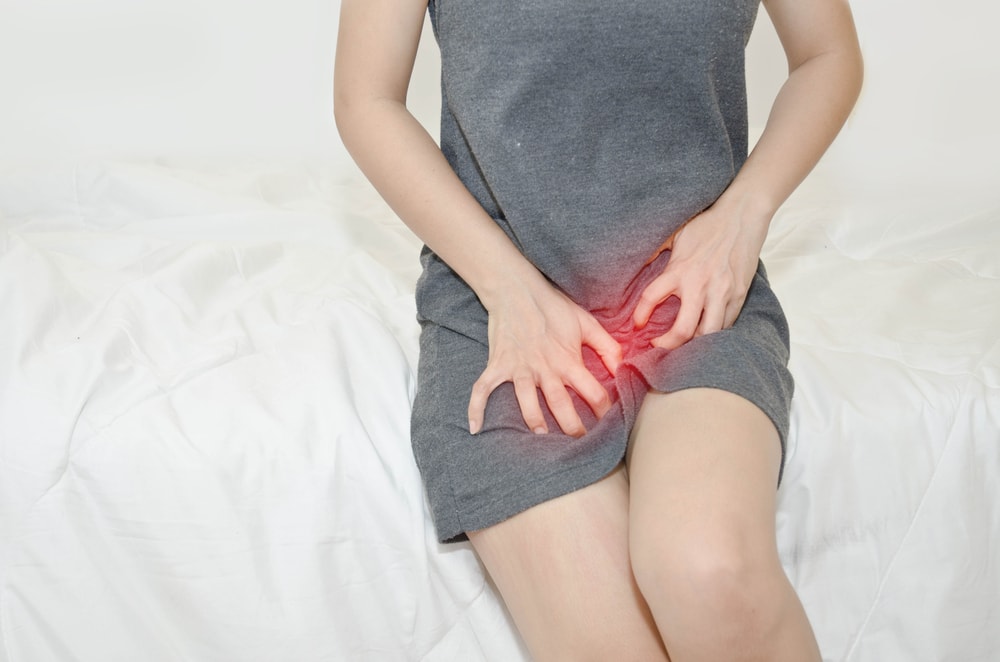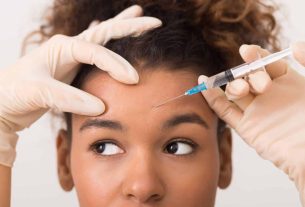The main cause of itchy vagina is allergies in the intimate area, generally caused by the use of intimate products or panties made of synthetic material. However, vaginal itching can also be caused by candidiasis, sexually transmitted infections (STIs) or vaginal cancer, for example.
In addition to itching, women may also experience other symptoms such as redness and/or swelling of the area, whitish plaques in the vagina, discharge, intense smell, painful or burning urination and the presence of small balls in the vagina.
In the presence of itching in the vagina, especially if it is accompanied by other symptoms, it is important to consult a gynecologist to identify the cause and begin the best treatment, which may involve taking a sitz bath, using ointments and/or antibiotics.
What causes itchy vagina
To find out the possible cause of your vaginal itching, please answer the following questions:
It is important to remember that this tool only serves as a guideline to try to identify the possible cause of the itching. For this reason, it should not replace a consultation with a doctor, who is the only professional capable of confirming the diagnosis and recommending appropriate treatment.
1. Candidiasis
Candidiasis is an infection caused by excessive growth of the fungus Candida albicans, which happens when the immune system is weakened or when changes occur in the pH of the intimate region, causing itching, burning, and white discharge with a texture similar to cream or curdled milk. Learn how to identify the symptoms of candidiasis.
What to do: Treatment for candidiasis is normally done with the use of antifungal ointments or oral medications, prescribed by the gynecologist, such as clotrimazole and miconazole, in addition to being recommended to sleep without underwear and wash the genital region only with water and neutral soap.
Don’t ignore the signs your body is giving you!
2. Allergies
Chlorine, present in bathtub or swimming pool water; latex, present in condoms; the lubricating gel; Some soaps and even some fabrics, such as lycra or microfiber, contain compounds that can cause allergies, leading to itching and other symptoms, such as a burning sensation, redness or swelling in the vagina.
What to do: The treatment of allergies must be carried out under the guidance of a gynecologist who will evaluate the possible causes and recommend the most appropriate medicine, which may include corticosteroids and antiallergics. It is also important to avoid using condoms with dyes, flavorings and latex, and to wear cotton panties, as they are a material that does not cause allergies or irritation in the intimate area.
However, to treat semen allergy, it is recommended to use a condom during all sexual relations to avoid direct contact with sperm. Another treatment that may be recommended by the gynecologist is desensitization, where the doctor inserts small portions of semen, every 20 minutes, into the woman’s vagina so that the body begins to recognize and accept the sperm. Find out what semen allergy is and how to treat it.
3. Sexually transmitted infections
Some sexually transmitted infections, or STIs, such as trichomoniasis, vaginal warts or genital herpes, can also cause itching in the vagina. Understand the main symptoms of STIs in women.
What to do: When itching appears after sexual intercourse without using a condom, it is recommended to consult a gynecologist, so that tests can be carried out and the most appropriate treatment can be indicated, which may include the use of antibiotics and antivirals.
4. Bacterial vaginosis
Bacterial vaginosis is an infection that arises due to an imbalance in the vaginal flora, which can be caused by the use of vaginal douches, hormonal changes and the presence of an STI, for example, and which favor the growth of bad bacteria in the vagina, leading to the appearance itching and other symptoms, such as redness and discharge with a strong odor. Learn about other symptoms of bacterial vaginosis.
What to do: To combat bacterial vaginosis, the gynecologist generally recommends the use of antibiotics, which can be in the form of an ointment to be applied to the site or oral tablets. Furthermore, it is also recommended to use a condom during sex and avoid drinking alcoholic beverages.
5. Atrophic vaginitis
Being more common during menopause, breastfeeding and during the use of medicines to treat cancer, atrophic vaginitis is an inflammation in the vagina caused by a decrease in the hormone estrogen in the body, which causes symptoms such as itching, strong-smelling discharge and pain. or burning when urinating. See what atrophic vaginitis looks like.
What to do: The treatment of atrophic vaginitis must be recommended by a gynecologist, who may recommend the use of the estrogen hormone, in the form of cream or tablets, lubricants and analgesic medications.
6. Cytolytic vaginosis
Cytolytic vaginitis occurs when the number of lactobacilli, naturally present in the vagina, increases greatly, decreasing the pH of the region and causing symptoms similar to those of candidiasis, such as itching, whitish discharge, with a texture similar to cream or curdled milk and without any smell. See other symptoms of cytolytic vaginosis.
What to do: To treat cytolytic vaginosis, the gynecologist may recommend vaginal suppositories, douches or sitz baths with sodium bicarbonate, to reduce the amount of lactobacilli and increase vaginal pH. Find out how to take a sitz bath with sodium bicarbonate for cytolytic vaginosis.
7. Lichen planus
Lichen planus is an inflammatory disease caused by an immune system reaction to some medications, chemicals or stress, causing itching and burning in the vagina. Understand what it is and learn about other symptoms of lichen planus.
What to do: Lichen planus treatment should be carried out by a dermatologist or gynecologist, who may recommend the use of anti-allergy medications, corticosteroids and psychotherapy in cases of stress.
8. Lichen sclerosus
Lichen sclerosus is a skin disease caused by inflammation, related to genetic and immunological factors, and which can cause the appearance of signs and symptoms, such as itching, irritation, peeling and blisters in the vagina. See all the symptoms of lichen sclerosus.
What to do: To combat lichen sclerosus, the doctor may recommend the use of corticosteroid ointments and other measures, such as avoiding scratching the genital region, wearing cotton clothing and washing the vagina only with water and neutral soap.
9. Cancer of the vulva
Vulvar cancer is a type of cancer that occurs in the external area of the vagina and can cause symptoms such as itching, pain, bleeding outside the menstrual period, the appearance of wounds, lumps or warts and changes in the color and texture of the vulva.
What to do: To treat this disease, your oncologist may recommend treatments such as radiation therapy, chemotherapy, or surgery.
10. Dermatitis
Dermatitis are inflammatory diseases caused by increased sebum production in the vulva or by contact with products, such as soap and perfumes, which cause irritation in the area, leading to itching, redness and flaking on the vulva.
What to do: Treatment varies according to the type of dermatitis, and the use of ointments with corticosteroids and antifungals may be indicated. In addition, the doctor may also recommend some home measures, such as keeping the vagina very clean and dry and avoiding bathing in very hot water, for example.
11. Genital psoriasis
Genital psoriasis is an autoimmune disease that affects the skin of the vulva, the external part of the vagina, causing the appearance of intense itching and reddish patches, with peeling and a dry appearance. Find out what genital psoriasis is and how it is treated.
What to do: To combat genital psoriasis, the doctor may recommend the use of corticosteroid ointments and oral medications to reduce skin inflammation.
12. Menopause
Menopause can cause itching in the vagina and vulva region due to a decrease in the level of circulating estrogen, which causes a change in the barrier that maintains the integrity of the skin in the genital area and a decrease in the amount of vaginal secretions, resulting in dryness in the region, irritation and itching in the region.
What to do: To treat vaginal itching during menopause, the gynecologist may recommend hormone replacement therapy, which helps reduce symptoms during this period, as well as creams or gels to hydrate the intimate area. Furthermore, it is recommended to wear cotton underwear and avoid very tight clothing, as this can cause excessive sweating in the area, making itching worse.

How to avoid itchy vagina
To avoid itching in the vagina and vulva, it is recommended:
- Wear cotton underwear, avoiding synthetic materials that do not allow the skin to breathe and facilitate the growth of fungi;
- Maintain good intimate hygiene, washing only the vulva region daily, daily and after sexual intercourse, with neutral soap;
- Avoid wearing very tight pants, to prevent the increase in temperature in the intimate region;
- Change the absorbent every 4 or 5 hours, because the vagina is in direct and constant contact with fungi and bacteria present in the intimate region;
- Use a condom during sex, to avoid contamination with STIs.
These precautions also help to relieve local irritation and reduce itching, when it already exists. It is also recommended to avoid consuming foods with a lot of sugar, such as sweets, cakes, jellies, soft drinks and ice cream.
See nutritionist Tatiana Zanin for some food tips to treat itching:

Sign up for our newsletter and stay up to date with exclusive news
that can transform your routine!
Warning: Undefined array key "title" in /home/storelat/public_html/wp-content/plugins/link-whisper-premium/templates/frontend/related-posts.php on line 12
Warning: Undefined array key "title_tag" in /home/storelat/public_html/wp-content/plugins/link-whisper-premium/templates/frontend/related-posts.php on line 13




